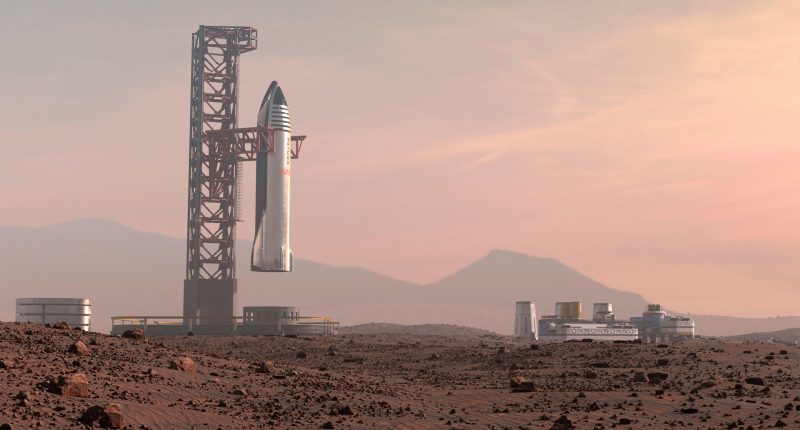ELON Musk has announced that approval to launch Starship should happen in time for a Friday launch, following an explosive first-run in April.
The 33-engine, nearly 400-feet tall, mega-rocket is what the eccentric billionaire foresees humans landing on Mars in, in as little as three years time.
The launch still awaits official approval, but insiders suggested to Musk that it could happen as early as November 17.
The US Federal Aviation Association (FAA) has kept Starship firmly grounded, alongside the US Fish and Wildlife Service, as they brief SpaceX on corrective actions for the next launch.
The FAA demanded 63 compulsory changes before allowing Musk to relaunch the rocket.
The concerns surrounding the project are to be expected, since it involves trying to get the tallest rocket ever built into space.
READ MORE ON SPACE
Each attempt costs SpaceX around $40million.
Musk thinks Starship has a “decent chance” of reaching orbit in the second test launch, after tweaking the design on how the first and second rocket stages detach.
Starship’s only launch attempt so far, conducted at SpaceX’s Starbase facility in Texas on April 20, exploded after the stages failed to detach.
The next-generation spacecraft went up in a ball of smoke just four minutes into its debut flight.
Most read in Tech
This time around, SpaceX has introduced a process known as “hot staging”, which will see the rocket light its engines while it is still essentially connected to the booster.
“Of course, it’s the first time we’re doing it. And I’d say that’s the riskiest part of flight two,” Musk said during a livestreamed interview at the International Astronautical Federation annual conference in late September.
“If the engines light and the ship doesn’t blow itself up during stage stuff, then I think we’ve got a decent chance to reach orbit.”
Musk previously gave the first launch attempt a 50/50 chance of success – so the outlook appears somewhat brighter for the second attempt.
From Earth to Mars
Starship is the $3billion rocket that is intended to get boots on the Moon sometime around 2025, and eventually ferry humans to Mars.
Musk previously bet his future Mars missions to occur sometime in the 2030s.
However, speaking virtually to the IAF in early October, Musk suggested the rocket could land on the Red Planet in just three to four years time.
“This is a very difficult programme,” Musk said in May, adding that “the rocket is roughly two-and-a-half times the thrust of the Saturn V, so if or when it reaches orbit it’ll be by far the largest rocket to reach orbit.
“The key to expanding life beyond Earth is a fully and rapidly reusable orbital rocket.
“This is a very hard problem given the constraints… Earth has a thick atmosphere and strong gravity, it is only barely possible to do this, that is why it has not been done before.”
Starship is designed to transport up to 100 people from Earth to the Moon and Mars.
The trip to Mars is about seven months long, meaning there will be onboard living spaces for crew members.
However, SpaceX is first focusing on getting Starship into orbit, before it begins designing the interior.
The rocket was also designed from the onset to be able to carry more than 100 tons of cargo to Mars and the Moon.
This is so it can store everything needed to build off-planet base camps.
Not only is it the tallest rocket to ever be flown, the first stage of Starship, known as the Super Heavy booster, is the most powerful rocket ever built and can produce up to 7.6million kilograms of thrust.
That is nearly double the current record held by Nasa’s Space Launch System (SLS).
Read More on The Sun
Starship is being developed as part of a $1.15billion contract with Nasa to deliver astronauts to the Moon in the US space agency’s Artemis programme.
Though it will be a critical tool in helping Musk fulfil his dreams of making humans interplanetary – which is his reason for founding SpaceX in the first place.
We pay for your stories! Do you have a story for The Sun Online Tech & Science team? Email us at [email protected]
This post first appeared on Thesun.co.uk












